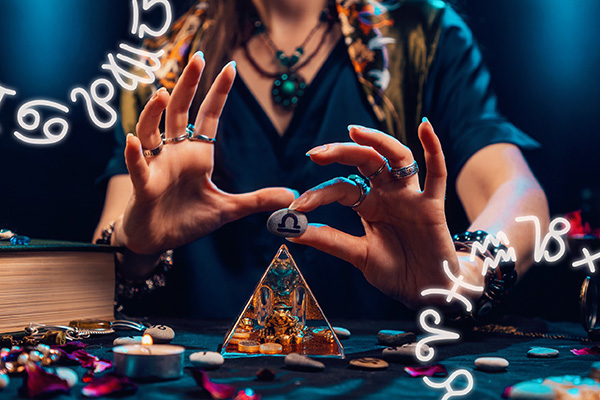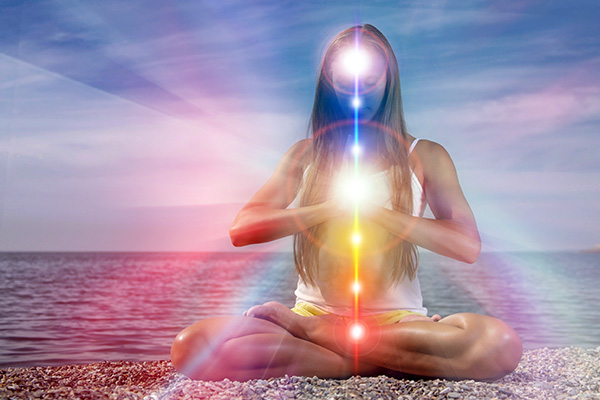spiritual teachings
The Power Of Precision In Psychic Reading
 As a professional rune reader, I’ve come to appreciate the profound importance of preparation and precision in any psychic reading. The core element is the clarity of the question asked, which is paramount in any reading.
As a professional rune reader, I’ve come to appreciate the profound importance of preparation and precision in any psychic reading. The core element is the clarity of the question asked, which is paramount in any reading.
I find that clients who approach a reading with clear questions and sincere intentions usually receive the most transformative insights and accurate answers.
In the runic tradition, the clarity of the question has always been central to the practice. From ancient times to the present, seekers have always understood that the runes respond most powerfully to direct inquiries. I’ve seen firsthand how precise questions can serve as a beacon, directing the energy of the reading to the heart of the matter.
Various runic traditions, including Norse, Germanic, and Anglo-Saxon, have always emphasized the importance of asking clear and specific questions.
Ancient teachings also suggest that when consulting the runes, one should approach the practice with honor and respect. Questions should be asked with a sincere and genuine intent, recognizing the sacred nature of the runic symbols and the guidance they provide.
Honoring Your Soul Contract
 Each of us came into our current life for a reason that is relevant to our soul evolution. Regardless of how, where and when we arrived, we all came into this physical existence with a planned mission known as our soul contract, or pre-birth soul plan.
Each of us came into our current life for a reason that is relevant to our soul evolution. Regardless of how, where and when we arrived, we all came into this physical existence with a planned mission known as our soul contract, or pre-birth soul plan.
Before entering this life, our souls deliberately choose certain experiences and lessons to learn and contributions to make for the purpose of our own spiritual evolution. It’s essentially our cosmic to-do list!
We come for a variety of reasons: some to learn, some to teach, some to grow, some to heal. Some come to observe, others to participate. Some come to navigate a profound dark night of the soul. Some even come to influence the masses or change the world forever.
Whatever the nature of your soul contract, you can be absolutely certain that there is a divine purpose to it all. Never forget that your soul mission is your own doing. We owe our existence and our journey to no one. It is ours alone to experience and ours alone to complete.
One of the most empowering things we can do in this lifetime is to uncover the nature of our soul contract to ensure our ultimate success. We must reflect on our true purpose and the meaningful connections and experiences we encounter.
Free Yourself From Karmic Debt This Year
 With the start of a new year, many of us are eager to set new financial goals and improve our overall financial situation. For those struggling with debt, the new year can be a great time to take control of your finances and make a plan to get out of debt.
With the start of a new year, many of us are eager to set new financial goals and improve our overall financial situation. For those struggling with debt, the new year can be a great time to take control of your finances and make a plan to get out of debt.
But there is more to our life journey than financial debt. There is also the much more important soul debt known as our karma. A debt that for some of us may require much more urgent attention.
Karmic debt is the result of all the negative actions we take in this life, and in past lives, that have consequences beyond our present existence. If we accumulate bad karma through actions that cause harm to others or ourselves, we will experience negative consequences in this life, or in a future life. These karmic consequences will in time manifest as difficulties, challenges, obstacles and sufering in our lives. Similarly, if we accumulate good karma through deeds that benefit others, we will experience positive consequences such as abundance, happiness, health, and success.
If you feel persistently stuck in some kind of negative cycle, burdened by what feels like repeated bad luck, hard times, or difficult relationships, karmic debt is most likely playing a role. Breaking these patterns requires that you take responsibility for your misdeeds or inappropriate actions in the past.
The Amazing Law Of Vibration
 There are seven universal laws that govern the universe and all that exists within it. By understanding and applying the principles of these laws, we can create a more positive, empowered and fulfilling life for ourselves.
There are seven universal laws that govern the universe and all that exists within it. By understanding and applying the principles of these laws, we can create a more positive, empowered and fulfilling life for ourselves.
The first three laws are known as the Higher Immutable Laws, which means that they are fundamental metaphysical principles that are absolute and eternal. They have always existed and are always at work, whether we are aware of them or not. They also cannot be changed or transcended in any way, whether we like it or not.
The three immutable universal laws are:
The Law of Mentalism: Everything is mind, the universe is conscious.
The Law of Correspondence: As above, so below; as below, so above; as within, so without.
The Law of Vibration: Everything is energy in constant motion, vibrating at different frequencies.
The remaining four laws are the lower mutable laws, meaning they are adaptable or changeable and can be influenced, altered or transcended by our thoughts, beliefs and actions to create a more ideal existence.
The True Meaning Of Holiday Gifts
 While wrapping Christmas gifts for family and friends today, I thought about whether it is better to be on the giving or receiving end of presents during the holiday season?
While wrapping Christmas gifts for family and friends today, I thought about whether it is better to be on the giving or receiving end of presents during the holiday season?
In my childhood, receiving presents was undoubtedly the best! But my parents also taught me the importance of giving. They gave my sister and me a small allowance during the holidays to buy gifts for others. It was fun to shop for small items to give to our loved ones. With much anticipation, wetried to pick things that people would actually like and appreciate.
I therefore learned early on that while receiving gifts can be exciting and fun, giving them can be even more rewarding.
My parents were certainly on to something, because the value of giving has been scientifically proven to be more than just a sweet sentiment. For example, according to a study by the American Psychological Association, giving to others increases life expectancy by at least five years! Another study found that people who give to others experience lower blood pressure, less depression, and lower stress levels. In addition, giving to others can increase happiness and well-being. A Harvard Business School study found that giving money to someone else increased participants’ happiness more than spending it on themselves.
The Spiritual Importance Of Releasing Resentments
 I went out for lunch today and had a bad service experience with the waitress. It was as if she didn’t care much to listen to what I wanted. She seemed distracted and careless.
I went out for lunch today and had a bad service experience with the waitress. It was as if she didn’t care much to listen to what I wanted. She seemed distracted and careless.
Two and a half months ago, I had a similar experience at another restaurant when the server packed the wrong items for me to take home. I felt ignored, even disrespected. Today’s experience brought back the same feelings and memories.
I was so upset that I decided I was not going to leave her a tip. But then, in the middle of my meal, while feeling angry and somewhat sorry for myself, I overheard a nearby customer calling her friend by the same name as my late mother.
This caused me to pause and reflect on my toxic thoughts about the careless waitress. You see, my mother was also a waitress many years ago. It was how she put food on the table and put us through school.
Perhaps today’s events were meant to remind me during the holiday season how many of us go through life with unhealed “mother wounds.”
Spirit now had my attention and proceeded to make me aware that my waitress had her own issues with her mother growing up, and that she is now a single mother herself, barely making ends meet. This realization instantly changed my perspective and my petulant attitude.
The Basics Of Chakra Balancing
 Did you know that we have two bodies? Not only do we have a physical body, but we also have a light body.
Did you know that we have two bodies? Not only do we have a physical body, but we also have a light body.
Our physical body is our visible and tangible form, made up of bones, muscles, organs and other tissues. It is our physical manifestation in this earthly realm and is subject to the laws of physics and biology.
Our light body, on the other hand, is the subtle energy system underlying to the physical body. It is the energetic bridge between our physical body and our higher, soul existence beyond the physical body. The light body is invisible to the naked eye and is subject to metaphysical or universal laws.
The concept of the ‘body of light‘ or ‘luminous body’ is found in various esoteric, occult, and mystical teachings and is also known as the aura, human energy field, astral body, subtle body, spirit body, radiant body, sidereal body, or celestial body.
The main feature of the light body are the chakras, an intricate network of energy centers or vortices that play a vital role in our physical, mental, and spiritual well-being. According to some teachings there are as many as 114 to 88,000 chakras, but this is not a commonly accepted understanding in the fields of yoga and energy healing.